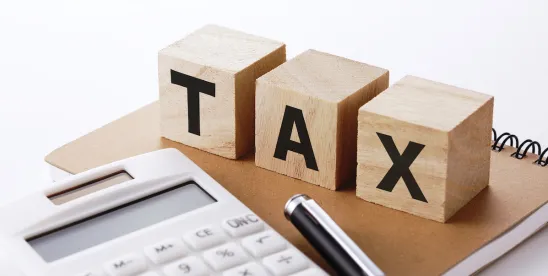On May 29, 2024, the Internal Revenue Service (IRS) and the Treasury Department released the pre-publication version of proposed guidance to implement “technology-neutral” clean electricity tax credits, including deeming certain technologies as per se zero-emitting and outlining potential methodologies for determining how other technologies—namely those involving combustion or gasification—could qualify as zero-emitting based on a lifecycle emissions analysis (LCA). The Clean Electricity Production Credit (45Y) and Clean Electricity Investment Credit (48E) were enacted in the Inflation Reduction Act (IRA) of 2022 and replace the current production and investment tax credits that are explicitly tied to certain types of renewable energy technologies.
Stakeholders have cited the 45Y and 48E credits as the most important driver of greenhouse gas (GHG) emission cuts possible from the IRA over the next decade. One study by the Rhodium Group found that the credits could reduce the power sector’s GHG emissions by up to 73 percent by 2035. The tax credits aim to give qualifying facilities the ability to develop technologies over time as they reduce emissions and offer longer-term certainty for investors and developers of clean energy projects. This proposed rule, when finalized, will be a critical driver for developers and companies allocating resources among different projects and investments.
The proposed guidance is scheduled to be published June 3, 2024 in the Federal Register, launching a 60-day comment period. A public hearing will be held August 12-13, 2024.
Proposed Guidance Details
Starting in Fiscal Year (FY) 2025 for projects placed into service after Dec. 31, 2024, 45Y provides taxpayers with a base credit of 0.3 cents (1.5 cents, if the project meets prevailing wage and apprenticeship requirements) per kilowatt of electricity produced and sold or stored at facilities with zero or negative GHG emissions. (These per kilowatt credit values are adjusted for inflation using 1990 as the base year.) Under 48E, taxpayers would receive a 6 percent base credit (30 percent, if the project meets prevailing wage and apprenticeship requirements) on qualified investment in a qualified facility for the year the project is placed in service. Both credits include bonus amounts for projects located in historical energy communities, low-income communities, or on tribal land; for meeting certain domestic manufacturing requirements; or for being part of a low-income residential building or economic benefit project. Direct pay and transferability are options for both credits. Both credits are in effect until 2032, when they become subject to a three-year phaseout.
Technologies recognized as per se zero-emissions in the guidance are wind, solar, hydropower, marine and hydrokinetic, nuclear fission and fusion, geothermal, and certain types of waste energy recovery property (WERP). The guidance also outlines how energy storage can qualify, including by proposing definitions of electricity, thermal, and hydrogen storage property.
A principal debate in the proposal is how to determine, using an LCA, whether certain combustion and gasification (C&G) technologies can qualify as zero-emitting.
The guidance includes a set of definitions and interpretations critical to implementation of the tax credits. For example, the proposed C&G definition includes a hydrogen fuel cell if it “produced electricity using hydrogen that was produced by an electrolyzer powered, in whole or in part, by electricity from the grid because some of the electricity from the grid was produced through combustion or gasification.” The proposed C&G definition would also include both biogas- and biomass-based power, but eligibility depends on the LCA results; for biomass, the guidance seeks comment on what spatial and temporal scales should apply and how land use impacts the LCA.
The guidance states that the IRS intends to establish rules for qualifying facilities that generate electricity from biogas, renewable natural gas, and fugitive sources of methane. The guidance says that Treasury and the IRS “anticipate” requiring that, for such facilities, the gas must originate from the “first productive use of the relevant methane.”
The proposed C&G definition allows for carbon capture and storage (CCS) that meets LCA requirements. However, the IRA does not allow credits to go toward facilities already using certain other credits, including the relatively more generous section 45Q credits for CCS.
Specifically, there are seven other credits that cannot be used in combination with a 45Y or 48E credit: 45 (existing clean electricity production credit); 45J (advanced nuclear electricity credit); 45Q (CCS); 45U (zero-emission nuclear credit); 48 (existing clean electricity investment credit); for 45Y, 48E (new clean electricity production credit); and for 48E, 45Y (new clean electricity investment credit).
The guidance proposes beginning and ending boundaries for LCAs, stating “the starting boundaries would include the processes necessary to produce and collect or extract the raw materials used to produce electricity from combustion or gasification technologies, including those used as energy inputs to electricity production. This includes the emissions effects of relevant land management activities or changes related to or associated with feedstock production.” Another topic in the guidance is the use of carbon offsets to reach net-zero qualification status, with the proposal seeking comment on boundaries: “offsets and offsetting activities that are unrelated to the production of electricity by a C&G Facility, including the production and distribution of any input fuel, may not be taken into account” by an LCA. The guidance also includes rules on qualified interconnection costs in the basis of a low-output associated qualified facility, the expansion of a facility and incremental production, and the retrofitting of an existing facility.
The guidance describes the role of the Department of Energy (DOE) in implementing the tax credits. Any future changes to technologies designated as zero-emitting or to the LCA models must be completed with analyses prepared by DOE’s national labs along with other technical experts. Facilities seeking eligibility may also request a “provisional emissions rate,” which DOE would administer with the national labs and experts “as appropriate.”
Next Steps
As noted above, the proposed guidance is scheduled to be published June 3, 2024 in the Federal Register, launching a 60-day comment period for interested parties to make arguments and provide evidence for changes they would like to see before the rule becomes final. A public hearing will be held August 12-13, 2024. The Treasury Department in consultation with interagency experts plans to carefully review comments and continue to evaluate how other types of clean energy technologies, including C&G technologies, may qualify for the clean electricity credits.







 />i
/>i
